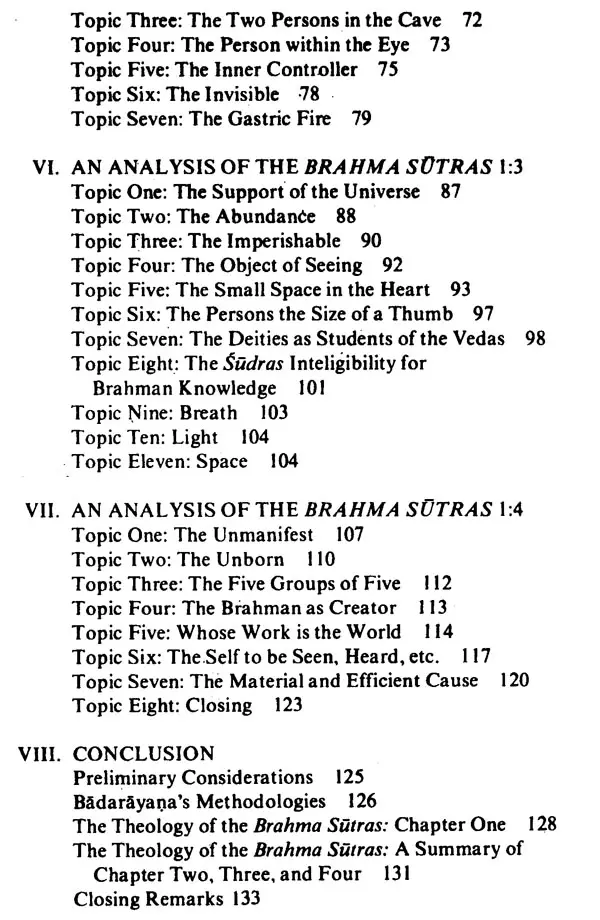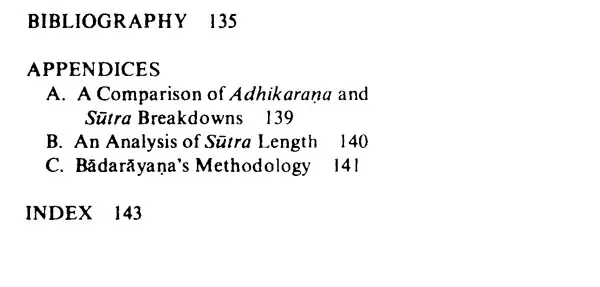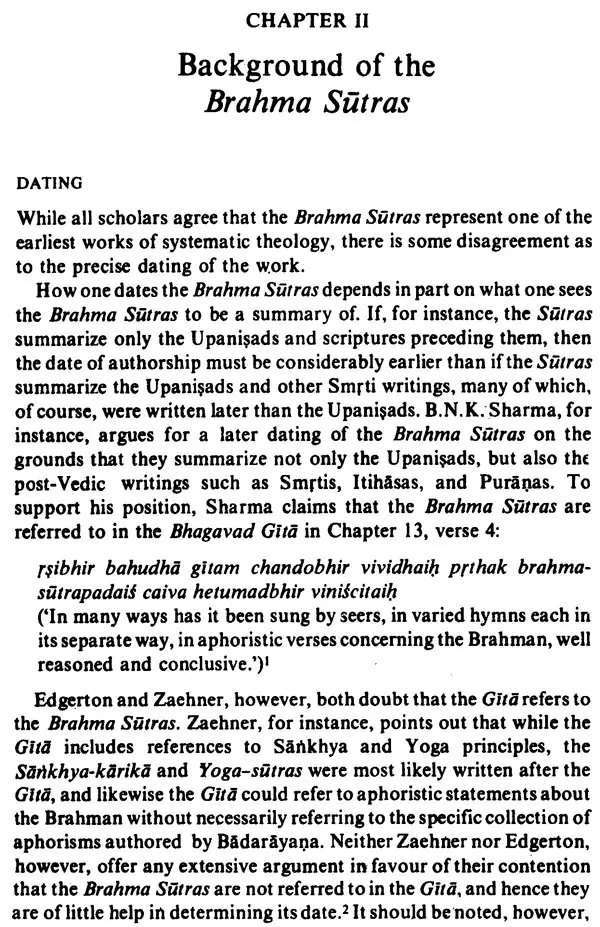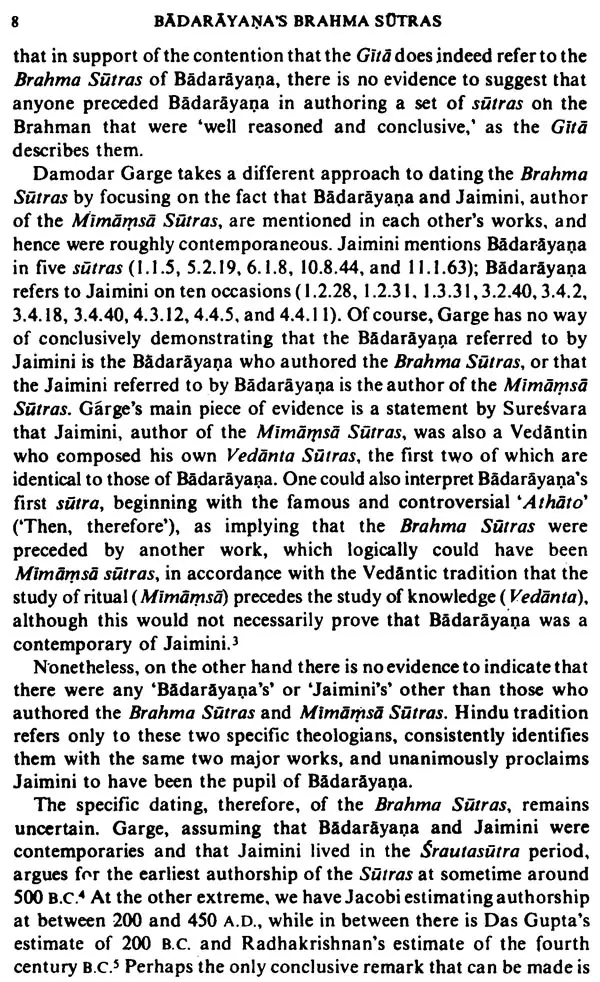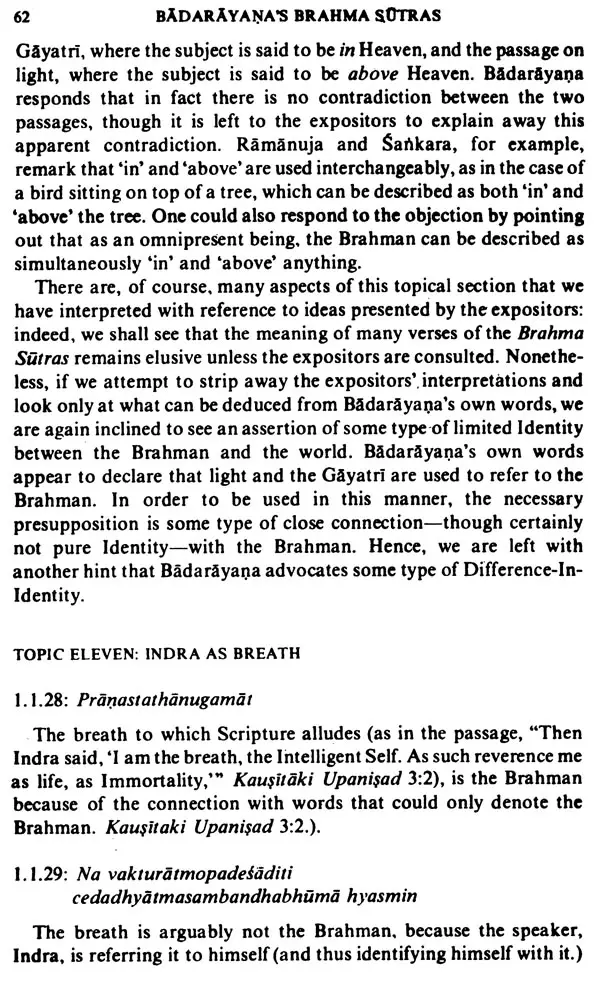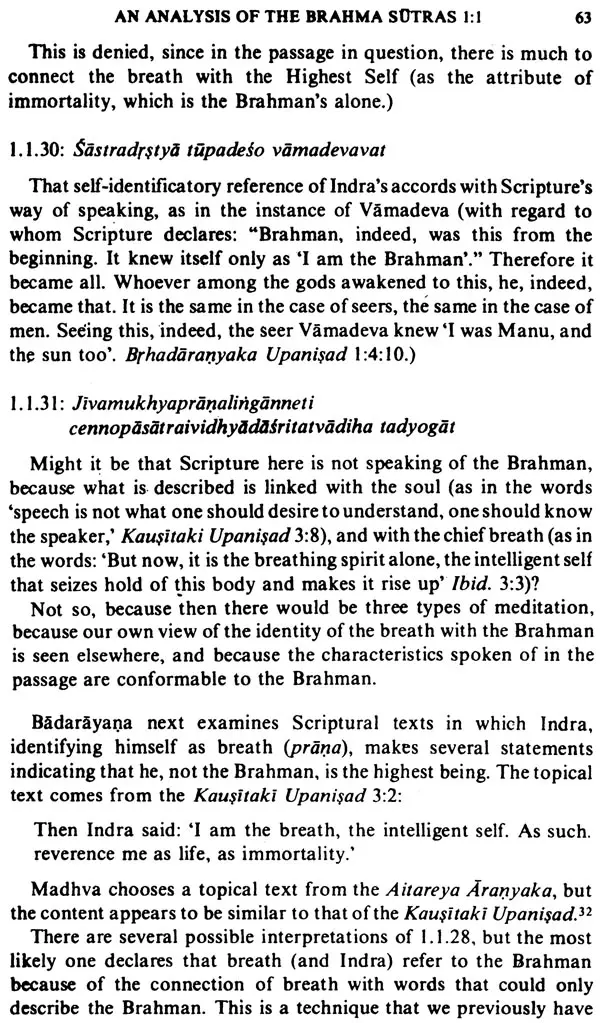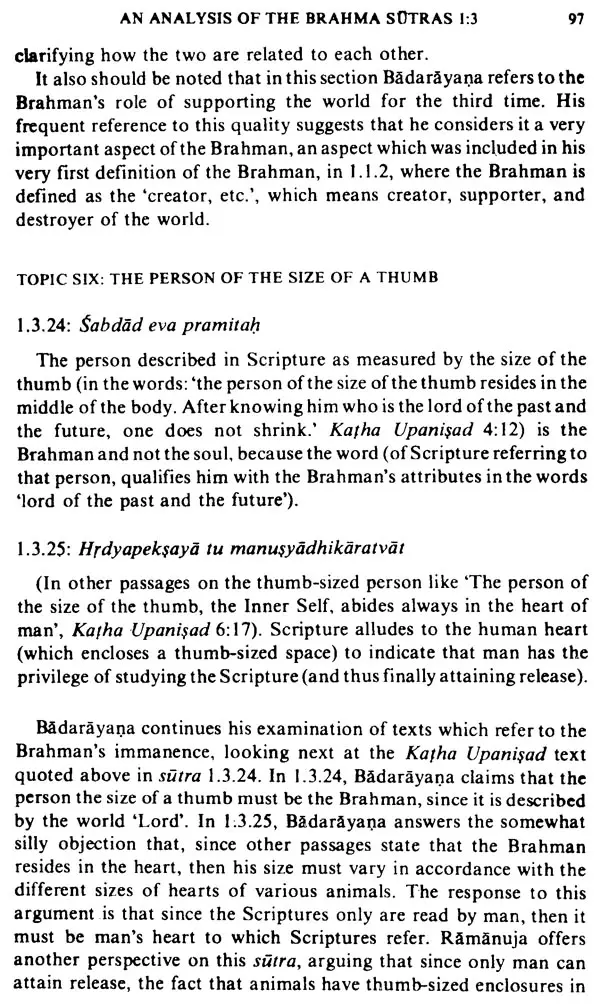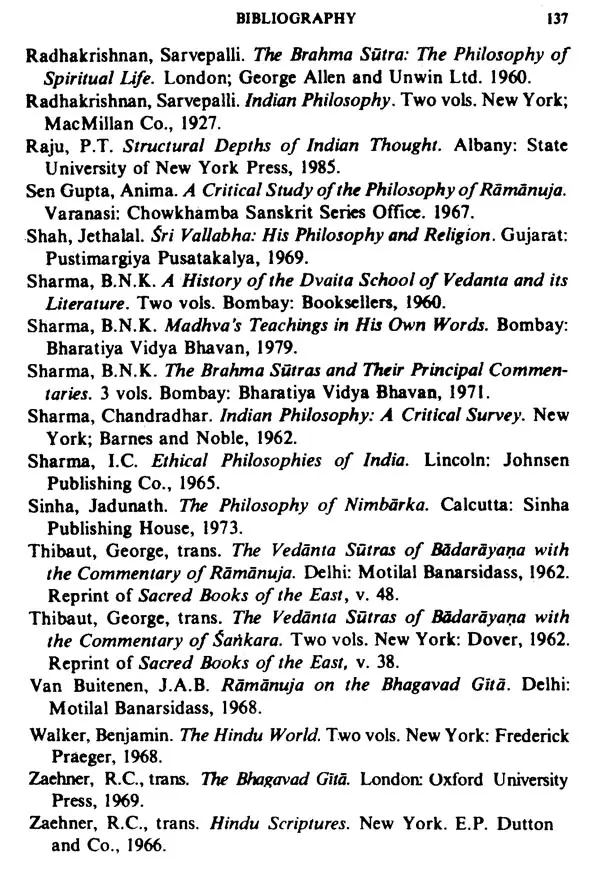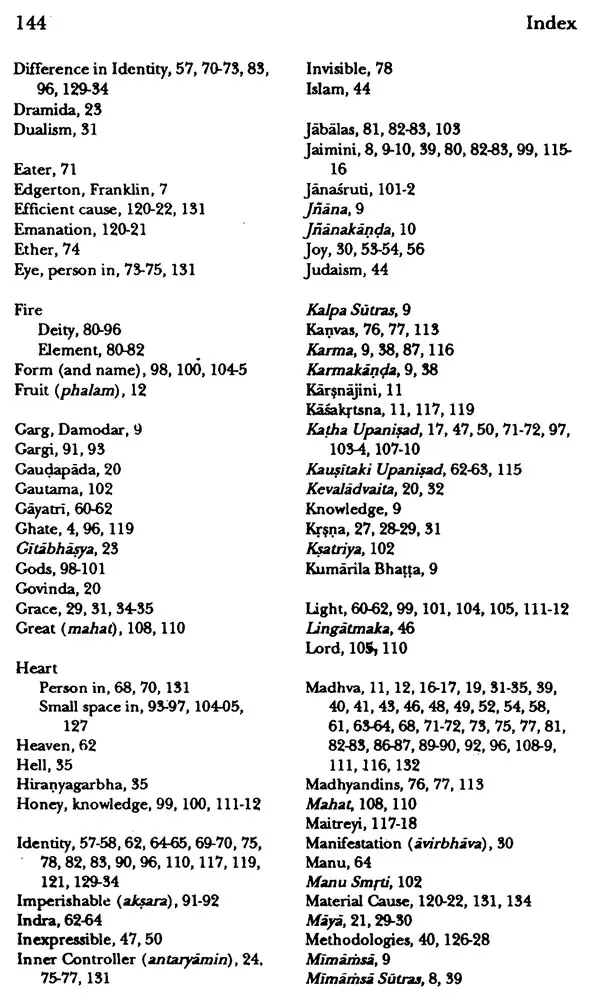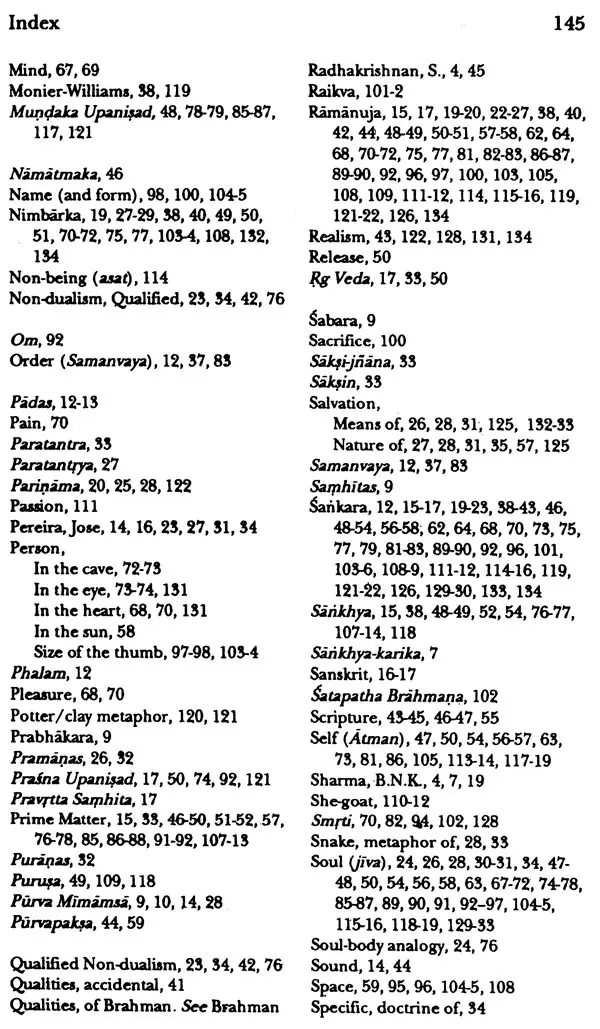
The Structure And Meaning of Badarayana's Brahma Sutras (A Translation and Analysis of Adhyaya I)
Book Specification
| Item Code: | UAD025 |
| Author: | George C. Adams, Jr. |
| Publisher: | MOTILAL BANARSIDASS DELHI |
| Language: | English |
| Edition: | 1993 |
| ISBN: | 9788120809314 |
| Pages: | 146 |
| Cover: | HARDCOVER |
| Other Details | 9.00 X 6.00 inch |
| Weight | 340 gm |
Book Description
Unfortunately, our access to Badarayana's work has been through the biased commentaries of these sectarian theologians, who often interpret the Brahma Sutras to support their own theological positions.
In this work Dr. Adams examines the first of the Brahma Sutras' four sections in an attempt to identify their original meaning and the theology that Badarayana attempted to express. Dr. Adams also offers a readable translation that provides the reader with the greater insight into the cryptic Sanskrit aphorisms composed by Badarayana. As such, this work provides a valuable contribution to understanding one of the seminal works in the history of Hindu theology.
Within the Hindu tradition, the significance of the Sutras derives from the tremendous task that they purport to accomplish: summarizing and systematizing the teachings of revelation and, in particular, the Upanisads.2 The Upanisads, of course, are the most important of the many Hindu religious scriptures. Consisting of a number of separate books, which in turn appear at times to be compilations from various sources, the Upanisads, dating from as early as 600 B.C., seek to set forth teachings on the nature of the supreme deity, the Brahman, and the relationship between the Brahman, the world, and the individual soul, or jiva. They do not represent a single, coherent system of thought, but rather contain a variety of views about the same basic themes. As Hume states,
... the Upanisads are no homogeneous products, cogently presenting a philosophic theory, but they are compilations from different sources recording the 'guesses at truth' of the early Indians. A single, well articulated system cannot be deduced from them.
Hence, we find in the Upanisads a wide variety of theological doctrines: Idealism and Realism; Difference, Identity, and Difference - in-Identity; devotion and gnosis; theism and impersonal monism; cosmologies identifying a variety of 'first causes': water, space, being, non-being, and personal Lord; and all of this presented in a variety of formats, including myths, rituals, hymns, and philosophical treatises. The Brahma Sutras attempted the intimidating task of systematizing this strange compilation of varied ideas expressed in varied forms, and identifying a consistent set of doctrines running throughout the Upanisads.
Book's Contents and Sample Pages

